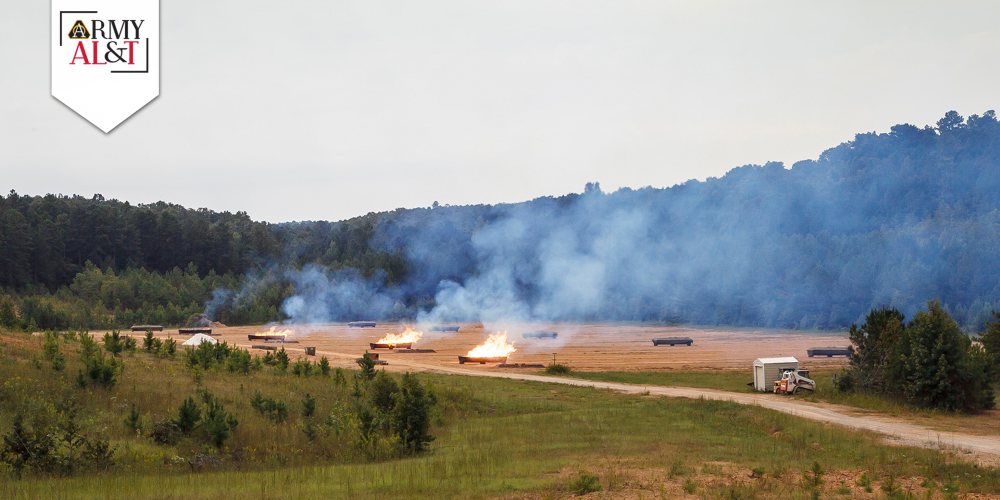The U.S. Department of Defense sustains combat readiness through safe and efficient disposal of excess, obsolete, and defective munitions at a rate sufficient to keep pace with new generations of munitions and to control overall stockpile growth. Open burning and open detonation are critical capabilities to safely accomplish the mission at the required rate to effectively support combat readiness.
In open burning, materials are destroyed by self-sustained combustion after being ignited. In open detonation, explosives and munitions are destroyed by a detonation of added explosive charges. Open detonation is also used in emergency situations to destroy munitions and improvised explosive devices deemed unsafe to move.
Historically, the Army has relied on open burning and open detonation as the most inexpensive processes to demilitarize ammunition. The demilitarization enterprise enables readiness by reducing unserviceable and obsolete stocks in storage, freeing up critical storage space for joint service new production, war reserve, and training munitions. Demilitarization, commonly called “demil,” reduces life, safety, and health risks by removing aging stocks from storage and increases depot capabilities by making room for good service stocks to be properly stored and aligned to operations.
Over the past 20+ years, research, development, test, and evaluation investments have been made to further the capabilities of alternative, closed disposal technologies with limited success. Two major projects are the Munitions Cryofracture Demilitarization Facility at McAlester Army Ammunition in McAlester, Oklahoma, and the Ammonium Perchlorate Rocket Motor Destruction capability at the Letterkenny Munitions Center in Chambersburg, Pennsylvania. A large portion of funds is used to maintain and improve the existing rotary kiln incinerators, which are the primary closed disposal capabilities used at various organic industrial base locations.


